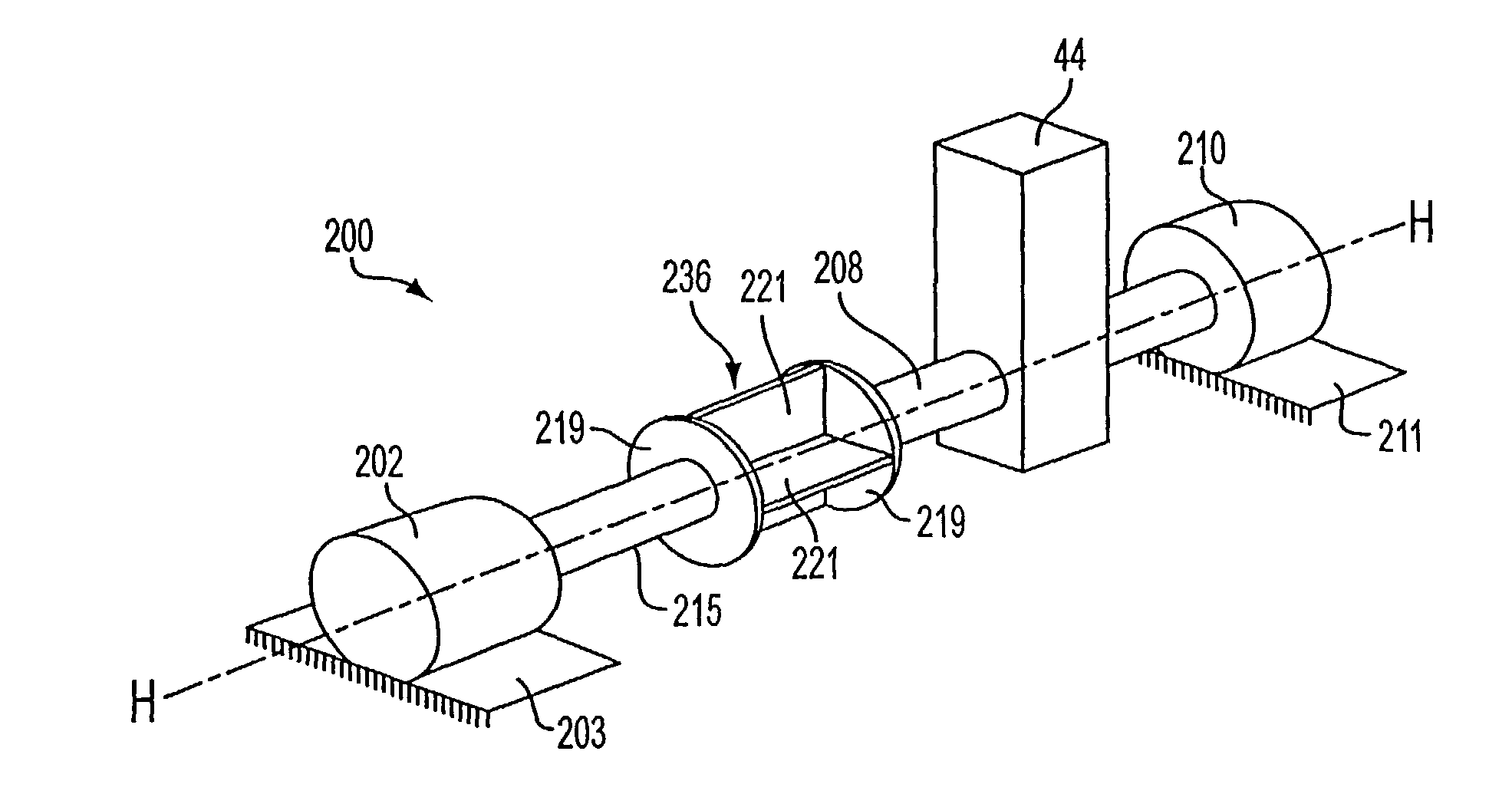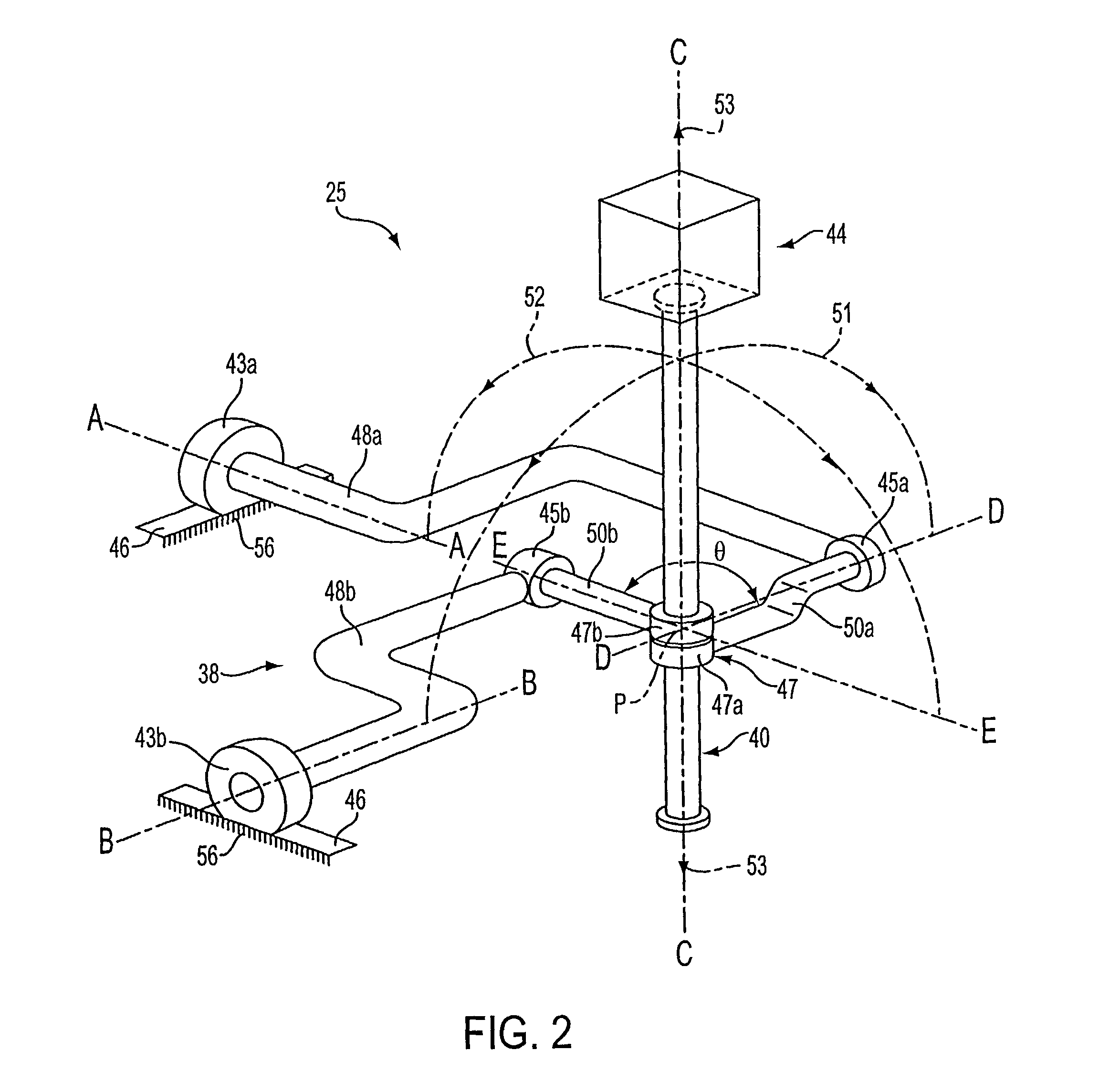Force feedback device including non-rigid coupling
- Summary
- Abstract
- Description
- Claims
- Application Information
AI Technical Summary
Benefits of technology
Problems solved by technology
Method used
Image
Examples
Embodiment Construction
[0046]In FIG. 1, a force feedback system 10 includes a human / computer interface apparatus 12, an electronic interface 14, and a host computer 16. The illustrated system 10 can used for a virtual reality simulation, video game, training procedure or simulation, use of a computer application program, or other application. In one preferred embodiment, a user manipulatable object 44 is grasped by a user and manipulated. Images are displayed on a display apparatus, such as screen 20, of the computer 16 in response to such manipulations.
[0047]The computer 16 is a preferably a personal computer or workstation, such as an IBM-PC compatible computer, Macintosh personal computer, or a SUN or Silicon Graphics workstation. Most commonly, the digital processing system is a personal computer which operates under the Windows™, Unix, MacOS, or similar operating system and may include a host microprocessor such as a Pentium, PowerPC, or other type of microprocessor.
[0048]The software running on the ...
PUM
 Login to View More
Login to View More Abstract
Description
Claims
Application Information
 Login to View More
Login to View More - R&D
- Intellectual Property
- Life Sciences
- Materials
- Tech Scout
- Unparalleled Data Quality
- Higher Quality Content
- 60% Fewer Hallucinations
Browse by: Latest US Patents, China's latest patents, Technical Efficacy Thesaurus, Application Domain, Technology Topic, Popular Technical Reports.
© 2025 PatSnap. All rights reserved.Legal|Privacy policy|Modern Slavery Act Transparency Statement|Sitemap|About US| Contact US: help@patsnap.com



